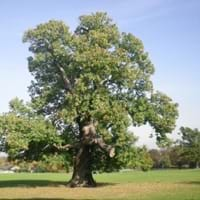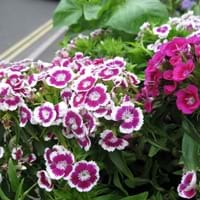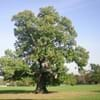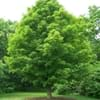Life Span
Perennial
Biennial and Perennial
Type
Tree
Flowering Plants
Origin
Eastern Asia
Europe, Northern Europe, Western Europe
Types
Not Available
'Bellagio Apricot' begonia, 'Bellagio Blush' begonia, 'Bellagio Pink' begonia
Number of Varieties
Not Available
Habitat
Temperate Regions
Subtropical climates, Tropical regions
USDA Hardiness Zone
6-8
3-9
Sunset Zone
A3, 2a, 2b, 3a, 3b, 4, 5, 6, 7, 8, 9, 10, 12, 14, 15, 16, 17, 18, 19, 20, 21, 22, 23, 24
21,22
Habit
Oval or Rounded
Cushion/Mound-forming
Flower Color
Red, Purple
White, Yellow, Red, Pink, Light Pink, Rose, Dark Red, Orange Red
Flower Color Modifier
Bicolor
Bicolor
Fruit Color
Red, Green
Not Available
Leaf Color in Spring
Green, Light Green
Light Green, Blue Green, Gray Green
Leaf Color in Summer
Green
Light Green, Blue Green, Gray Green
Leaf Color in Fall
Yellow, Gold
Light Green, Blue Green, Gray Green
Leaf Color in Winter
Not Available
Light Green
Leaf Shape
Oblong or Lanceolate
Long Linear
Plant Season
Spring, Summer, Fall, Winter
Spring, Summer, Fall
Sunlight
Full Sun, Partial Sun, Partial shade
Full Sun, Partial Sun
Type of Soil
Clay, Loam, Sand
Loam
The pH of Soil
Acidic, Neutral, Alkaline
Neutral
Soil Drainage
Well drained
Well drained
Bloom Time
Spring
Early Spring, Spring, Late Spring
Tolerances
Shade areas
Drought, Shade areas
Where to Plant?
Ground
Container, Ground, Pot
How to Plant?
Grafting, Seedlings
Divison, Seedlings, Stem Planting
Plant Maintenance
Medium
Low
Watering Requirements
Average Water Needs
Needs watering once a week
In Summer
Lots of watering
Moderate
In Spring
Moderate
Moderate
In Winter
Average Water
Average Water
Soil pH
Acidic, Neutral, Alkaline
Neutral
Soil Type
Clay, Loam, Sand
Loam
Soil Drainage Capacity
Well drained
Well drained
Sun Exposure
Full Sun, Partial Sun, Partial shade
Full Sun, Partial Sun
Pruning
Remove damaged leaves, Remove dead branches, Remove dead leaves
Cut or pinch the stems, Remove damaged leaves, Remove dead branches, Remove dead leaves
Fertilizers
All-Purpose Liquid Fertilizer
All-Purpose Liquid Fertilizer, fertilize in growing season, fertilize in spring, fertilize in summer
Pests and Diseases
Fungal Diseases, Squirrels
Fusarium wilt, Gray mold, Leaf spot, Root rot, Rust, Slugs
Plant Tolerance
Drought
Drought, Shade areas
Flowers
Insignificant
Showy
Flower Petal Number
Single
Single, Double, Semi-Double
Foliage Texture
Fine
Fine
Foliage Sheen
Matte
Matte
Attracts
Not Available, Squirrels
Not Available
Allergy
Oral Allergy, Throat itching
Asthma
Aesthetic Uses
Beautification, Landscape Designing
Beautification, Bouquets, Cottage Garden
Beauty Benefits
Not Available
Not Available
Environmental Uses
Air purification
Air purification
Medicinal Uses
Potassium, Rich in Iron, Vitamin A, Vitamin B, Vitamin C
Bronchitis, Candidiasis, Cold, Digestive disorders, Dysentry, Haemoptysis, Liver problems, Menstrual Disorders, Scrofula, Swelling
Part of Plant Used
Seeds
Whole plant
Other Uses
Food for animals, Used as a nutritious food item, Used As Food, Used for its medicinal properties, Used for Landscaping
Food for animals
Used As Indoor Plant
No
Yes
Used As Outdoor Plant
Yes
Yes
Garden Design
Container, Feature Plant, Foundation, Mixed Border, Rock Garden / Wall, Topiary / Bonsai / Espalier
Bedding Plant, Container, Cutflower, Feature Plant, Groundcover, Hanging Basket, Mixed Border, Rock Garden / Wall
Botanical Name
Castanea sativa
DIANTHUS barbatus 'Heart Attack'
Common Name
Sweet Chestnut, Chestnut
Heart Attack Sweet William, Sweet William
In Hindi
शाहबलूत का फल
स्वीट विलियम
In German
Esskastanie
Bartn
In French
châtaignier
sweet william
In Spanish
Castaña dulce
Guillermo dulce
In Greek
Sweet Chestnut
είδος γαρύφαλλου
In Portuguese
Castanheiro
william doce
In Polish
słodki Chestnut
słodki William
In Latin
Dulce Chestnut
amaranthus
Phylum
Magnoliophyta
Magnoliophyta
Class
Magnoliopsida
Magnoliopsida
Order
Sapindales
Caryophyllales
Family
Aceraceae
Caryophyllaceae
Clade
Angiosperms, Eudicots, Rosids
Angiosperms, Core eudicots, Eudicots
Tribe
Not Available
Not Available
Subfamily
Not Available
Not Available
Number of Species
Not Available
Not Available
Season and Care of Sweet Chestnut and Sweet William
Season and care of Sweet Chestnut and Sweet William is important to know. While considering everything about Sweet Chestnut and Sweet William Care, growing season is an essential factor. Sweet Chestnut season is Spring, Summer, Fall and Winter and Sweet William season is Spring, Summer, Fall and Winter. The type of soil for Sweet Chestnut is Clay, Loam, Sand and for Sweet William is Loam while the PH of soil for Sweet Chestnut is Acidic, Neutral, Alkaline and for Sweet William is Neutral.
Sweet Chestnut and Sweet William Physical Information
Sweet Chestnut and Sweet William physical information is very important for comparison. Sweet Chestnut height is 300.00 cm and width 370.00 cm whereas Sweet William height is 45.00 cm and width 30.00 cm. The color specification of Sweet Chestnut and Sweet William are as follows:
Sweet Chestnut flower color: Red and Purple
Sweet Chestnut leaf color: Green and Light Green
Sweet William flower color: White, Yellow, Red, Pink, Light Pink, Rose, Dark Red and Orange Red
- Sweet William leaf color: Light Green, Blue Green and Gray Green
Care of Sweet Chestnut and Sweet William
Care of Sweet Chestnut and Sweet William include pruning, fertilizers, watering etc. Sweet Chestnut pruning is done Remove damaged leaves, Remove dead branches and Remove dead leaves and Sweet William pruning is done Cut or pinch the stems, Remove damaged leaves, Remove dead branches and Remove dead leaves. In summer Sweet Chestnut needs Lots of watering and in winter, it needs Average Water. Whereas, in summer Sweet William needs Moderate and in winter, it needs Average Water.





